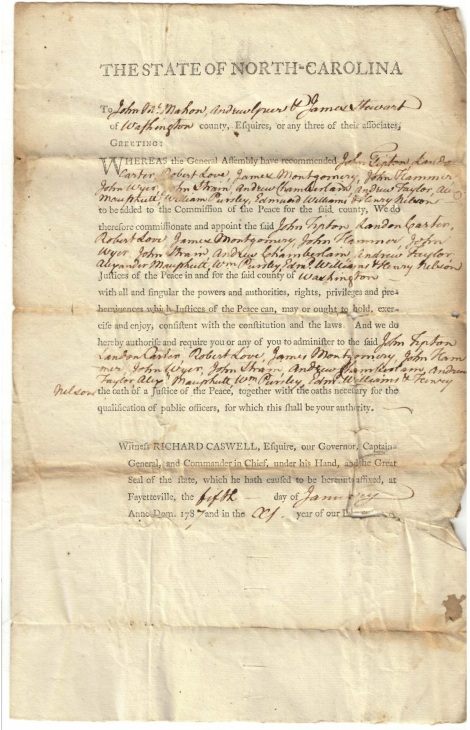 |
| Smithsonian |
We tease in the a3Genealogy researchers world, that dealing with records between 1785 - 1791, those four - five dreadful years of indecision, independence and defeat, in the "lost state of Franklin" will lead you down a never-ending rabbit hole. It was not until recently that I realized that we have never posted about this research conundrum that has few answers, but with a bit of digging, you may ferret out your State of Franklin ensconced ancestors. (In Spanish the word is literally "escondido" - hidden).
But, regardless of how you describe it, many researches just caste out this western North Carolina & eastern Tennessee regional area's research challenges as the "Appalachian" puzzlement." (Say that fast five times - "Appalachian puzzlement)." What researchers fail to realize is that due to the independence of what now would be considered an eight county region in northeastern Tennessee historically 1) was part of North Carolina 2) operated independently for four years, 1785 - 1788 as its own "quasi-state" which was presented but denied statehood by the Continental Congress.
If all would have gone well, our 14th state "would have been" the State of Franklin.
Yes, this denied state, the state of Franklin, never made it to realization, but operated independently for about 4 years. And, its citizens, our ancestors, left a papertrail. An unorganized, uncompiled, incomplete, illogically placed papertrail, but somewhat of a papertrail nonetheless. So let's go hunting for our ancestors in the state of Franklin - let's say between 1785 - 1791 (see the First Family Papers below).
Where to Begin
1) History. The not-quite -formed State of Franklin must be understood. Be sure to understand the issues, formations, and fall of what would have been the state of Franklin. Even though it was never ratified, it surely left our proud ancestors' paperwork.
- State of Franklin Chronology
- State of Franklin Genealogy, Familysearch wiki
- Washington County NC, vs Washington County, TN. Read here: FAQ
- Tiptonites vs Franklinites. Read about the 1788 Battle.
- Family Search digitized film #1728882, item 4, or
Family search digitized film #1683130 item 3.
 |
| Add caption |
4) County Records & Archives. Of course records were created in North Carolina, especially land records. The counties of Sullivan, and Washington Tennessee, (originally in North Carolina) have scattered records, some digitized. Marriages, deeds, wills and other court records can still be located within the counties of Washington County and Sullivan County, now Tennessee. Be sure to scour the records of the eight counties as well as both states.
- Washington County Archives.
- Tennessee State Library & Archives, TN Historical Society Collection. The original spelling was State of Frankland."
 |
| Justices of Peace |
 |
| Tennessee Historical Society, TN. State Library & Archives |
Happy New Year 2020
Kathleen Brandt
a3Genealogy@gmail.com




























